Keeping up with the Trends through Information Technology
The shocking year we are about to farewell, 2020, is set to leave a lasting legacy on how businesses will operate for a foreseeable future. Most significantly, the worldwide COVID-19 crisis has accelerated technology usage and innovation. These new business IT trends are here to stay and businesses that do not keep up with these trends will fall behind their competitors. The challenge for any business is which of these trends your business must leverage and how.
Healthcare

Healthcare has always been a very cautious and slow to adjust industry. The COVID-19 crisis has created a demand on the Healthcare industry to innovate to the point where innovation is no longer a choice, it has become a necessity for survival.
All of the major research companies are anticipating significant changes in the way Healthcare is delivered to patients. The leading innovation in Healthcare is emerging in the adoption of wearable sensors to help patients keep track of chronic conditions.
We are seeing an increase in health care apps (a.k.a. the Internet of Medical Things or IoMT) that allow doctors to monitor patients’ well-being remotely and in-home health apps that allow people to check heart rates from home.
A report by the World Health Organization explains what the next five years of digital health innovation may look like and what the industry’s strategy should be for utilizing these new technologies. “The vision of the global strategy is to improve health for everyone, everywhere by accelerating the development and adoption of appropriate, affordable, scalable, and sustainable digital health solutions.”
Artificial Intelligence or AI is one of the most revolutionary technology trends emerging. AI is essentially a computerized system built to mimic human behavior and intelligence. Its purpose is to perform tasks such as image recognition and speech with decision making based on finding patterns. AI can perform these tasks more accurately and faster than any human can! With a dramatic increase in the amount of data we are collecting through wearable technology, AI is now aiding Healthcare providers.
AI is providing medical professionals the ability to forecast and even treat possible health issues before a patient even has any symptoms.
Key takeaways for the Healthcare industry:
While this trend presents businesses in Healthcare with an opportunity to offer such solutions to their patients, it also highlights the imperative of failproof, reliably managed IT backup to ensure these devices meet their purpose at any time. Failure is not an option here!
- Ensure the digital systems you are using are compliant. This article will help you understand what is required here.
- Improve patient experience by using digital automation in your practice. Again we have an article here.
Remote Workforce

The pandemic will likely continue throughout the entire 2021 year. The need for remote work and data access will continue as it does today. There will be a mix of in the office and working from home with more making the move back to the office as the year matures. Business success will pretty much depend on the strength of an organization’s employee experience (EX) strategy as well as IT technology investments given this continued situation of working from home.
This means that with that many people working remotely long-term, companies will need to rethink what that experience is like –not just from a technology and environment perspective but also from leadership, change management, and career-growth perspectives.
Working from home has provided employees with an independent lifestyle. More educated, higher earning employees are far more likely to continue work from home, they continue to get paid, develop their skills, and advance their career. In contrast, those unable to work from home –either because of the nature of their jobs, or because they lack suitable space or Internet connections– will be left behind. They will face bleak prospects if their skills and work experience erode during an extended shutdown and beyond.
Working from home can be offered as an incentive to come and work for your business helping you to attract new talent. Even just offering the option to work from home will give you an advantage in the job market over competitors that don’t offer home working as an option to their staff.
Employers should be mindful that depending on where staff live they may be not be able to access broadband speeds that enable them to do their job effectively. Home based broadband services do not offer the reliability or performance required to efficiently work from home.
Key takeaways for the Working From Home Workforce in 2021:
- Ensure your employees have the tools they need to be effective and efficient while working from home. Internet and the hardware supporting your remote workforce become very important.
- While working from home, your employees are in a more relaxed environment and not under the effective controls of corporate based security. Educate you employees on what they should look out for. Here is an article on this that all employees should read.
Cybersecurity

The number of cybersecurity jobs is growing three times faster than other tech jobs. The market is falling short of skilled people to fill these positions. As a result, it’s predicted that there will be 3.5 million unfilled cybersecurity jobs by 2021 .
Hackers who try to illegally access data are not going to stop attempting to steal your personal or sensitive information. They will continue evolving methods to get through the toughest security measures. You will always require cybersecurity measures that evolve to curtail new trends, adapted to strengthen security to defend you against those hackers.
The majority of businesses worldwide have seen a jump in cyber attacks as a result of employees working from home, with most reporting an increase in COVID-19 related malware.
COVID-19 inspired malware saw the highest jump across the globe, with 92% noting an increase in such threats compared to typical volumes before the outbreak. Pandemic aside, 90% reported a climb in cyber-attacks over the past year, with 80% noting an increase in the level of sophistication in such threats.
Vulnerabilities in Operating Systems were the most common cause of breaches in 2020. It is vital that
businesses identify the evolving cyber security threats and effectively manage their information
systems during the current crisis, and as part of their broader business continuity plans.
While Cyber security is a very complex issue, there are some simple things that can be done to mitigate risk. Every business should have the following in place as a minimum;
- Ensure Two Factor Authentication (2FA) is in place for any publicly accessible login to your systems.
- If you are using Office 365, 2FA should be enabled. Here is how to enable it.
- Ensure all of your devices on your network, including those used by staff working remotely, are monitored and managed.


